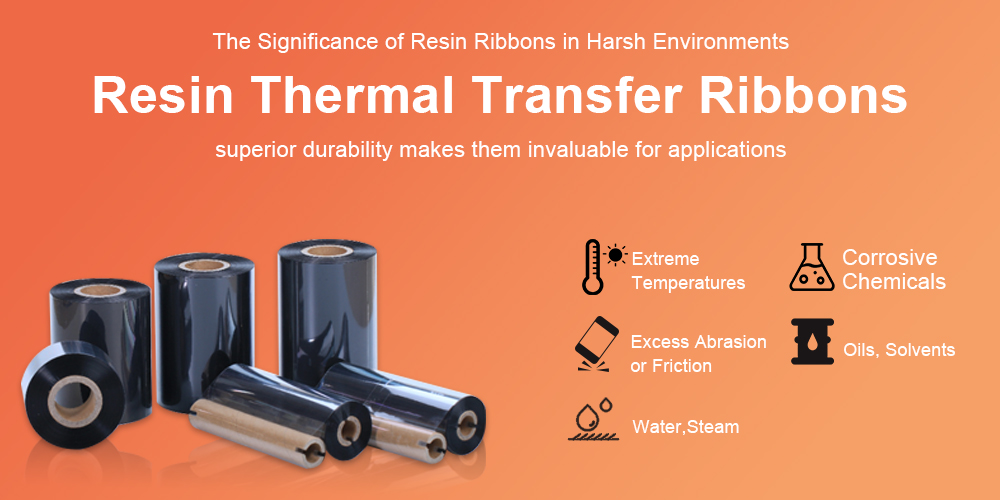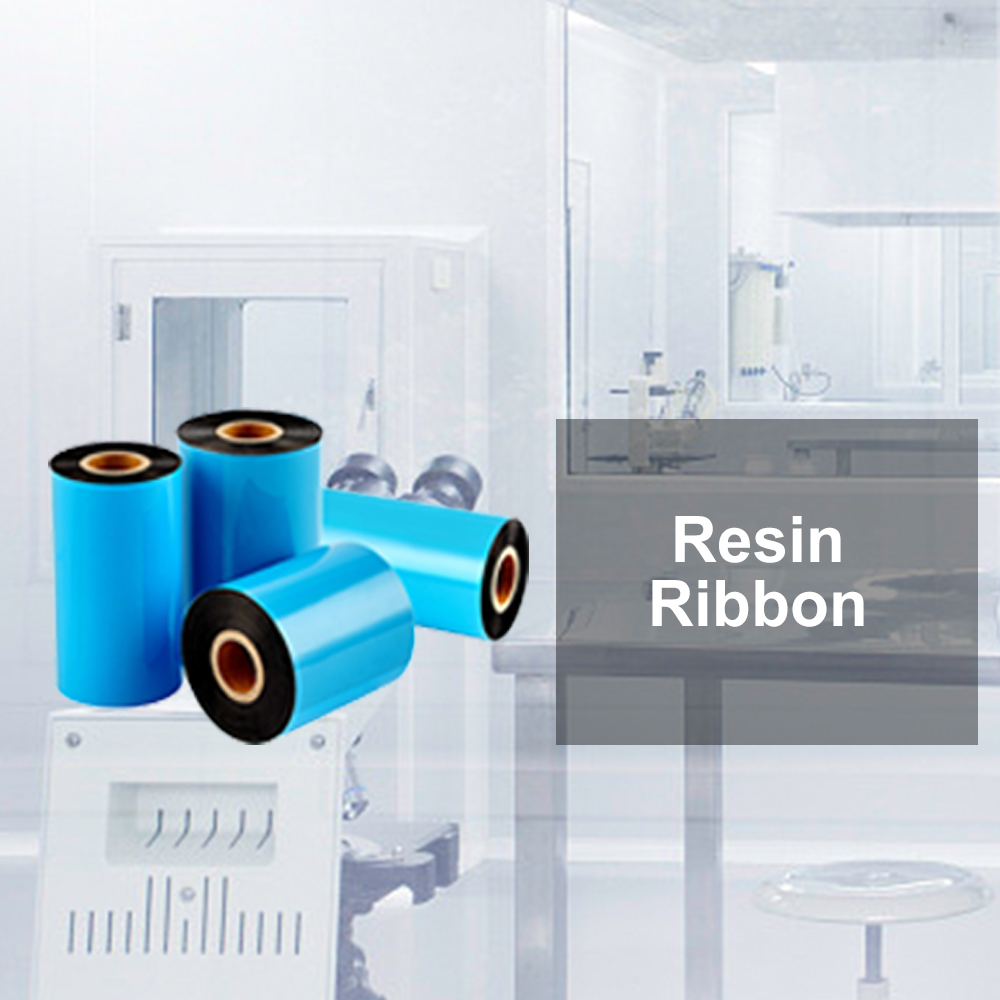How to Select the Most Durable Thermal Transfer Ribbons for Harsh Environments?
In the fast-paced, nonstop industrial world, the search for labels that can withstand extraordinary conditions never wanes. Next, comes the thermal transfer ribbons-the best choice of durable labeling and even quite indispensable across a myriad of industries from Pharmaceuticals to Logistics. This guide has been written to tell how the most resistant thermal transfer ribbons can be chosen, notably resin ribbons, that are particularly resistant against such ravages as heat, chemicals, and wear. It is after reading this that most people begin to truly understand thermal transfer technology and become empowered with the skills to choose ribbons that ensure both legibility and durability in the face of the harshest imaginable battles against the elements.
Thermal Transfer Ribbons
One of the most popular methods used in making quality and durable labels is thermal transfer printing. This technique makes use of a thermal print head that heats up and melts ink onto the ribbon, transferring the ink onto the label surface. The result? Crisp, long-lasting print that's resistant to smudging and fading-essential for tracking products through their lifecycle.
1. Three Main Types: Wax, Wax/Resin, and Resin Ribbons
- Wax Ribbons: Ideal for standard printing on paper materials, wax ribbons are economical but less resistant to smears and environmental factors.
- Wax/Resin Ribbons: A step up in durability, these ribbons offer better resistance to chemicals and slight abrasions while still being cost-effective.
- Resin Ribbons: The focus of our discussion is resin ribbons, which are the champions of extreme conditions. They withstand high temperatures, harsh chemicals, and excessive abrasion, making them perfect for challenging environments.
2. Why Resin Ribbons Shine in Harsh Conditions
Resin ribbons stand out due to their robust composition. Their ability to cling to a variety of materials, including synthetics like polyester, makes them versatile warriors against harsh industrial elements.
3. Quality Counts with Thermal Transfer Ribbons
Quality matters. Investing in superior thermal transfer ribbons, especially resin-based, means fewer reprints, less waste, and, ultimately, cost savings. High-quality ribbons also protect your thermal print head over time, reducing maintenance costs and prolonging the life of your equipment.
The Significance of Resin Ribbons in Harsh Environments
1. What Is a Harsh Environment?
Harsh environments are places where ordinary labels fear to tread-be it areas that undergo extreme temperatures, corrosive chemicals, or continuous abrading with forces. Typically, these challenges emanate from industries such as automotive manufacturing, aerospace, health, and outdoor logistics.
2. The Robust Resistance of Resin Ribbons
Resin ribbons are the elite choice for facing such adversities head-on. Their superior durability makes them invaluable for applications where labels must remain legible and intact over time. Here's why:
- Extreme Temperature Endurance: Whether it's the scorching heat of an engine or the icy chill of frozen goods storage, resin ribbons maintain their integrity without melting or cracking.
- Chemical Combatants: In environments where oils, solvents, and other harsh substances are commonplace, resin ribbons resist smearing and dissolution.
- Abrasion Armor: High-traffic areas can lead to wear and tear on labels. Resin ribbons protect against scratches and grazes, preserving barcode readability for effective scanning.
3. Case Studies of Resin Ribbons at Work
Case studies across industries underscore the importance of choosing the right ribbon for the job. For instance, in the pharmaceutical industry, labels must survive sterilization processes. Resin ribbons ensure that vital information stays intact from the manufacturer to the patient's hands. Similarly, in the automotive sector, parts tagged with resin-printed labels endure oil exposure and temperature fluctuations throughout production and use. By selecting resilient thermal transfer ribbons, particularly resin ribbons, businesses safeguard their operations against environmental threats and ensure their products remain tracked and compliant no matter the conditions.

Factors to Consider When Choosing Thermal Transfer Ribbons
1. Ensuring a Match Made
Compatibility is key when pairing thermal transfer ribbons with label substrates. Not all materials are created equal, and choosing the wrong type can lead to poor print quality or even damage to your printer. When it comes to resin ribbons, ensuring they match the labels you're using-typically made from synthetics like polypropylene or polyester-is crucial for optimum adhesion and durability.
2. Printer Compatibility
Just as important is ensuring that your resin ribbons are compatible with your specific brand and printer model. Using the wrong type of ribbon can result in poor image quality, damage to the print head, or other operational issues. Most printer manufacturers provide specifications for which ribbons work best with their machines-information that should be used as a guide for purchasing decisions.
3. Tailoring Your Choice to Environmental Challenges
Consider the specific harsh conditions your labels will face:
- High Temperatures: If your labels need to withstand high levels of heat, look for resin ribbons with a high melting point.
- Chemical Exposure: For resistance to chemicals, seek out ribbons formulated with special solvents.
- Physical Wear and Tear: If abrasion is a concern, find ribbons known for their toughness and ability to create a strong bond with the label material.
Evaluating how these factors might impact the performance of your thermal transfer ribbons can help you make an informed choice that meets your needs.
4. Longevity: The Long Haul of Label Life
Lastly, consider the expected lifespan of your labels. Will they need to last a few days, several months, or multiple years? This will affect not only the choice of ribbon but also the overall cost-effectiveness of your labeling system. Resin ribbons, while more expensive upfront, could save money in the long run by reducing the frequency of re-labeling due to wear and tear. By thoroughly assessing these factors, you can ensure that the thermal transfer ribbons you select will meet the demands of your tough environment and provide reliable performance over time.
Evaluating the Quality of Thermal Transfer Ribbons
1. Adhering to Manufacturing Standards and Certifications
Selecting thermal transfer ribbons, especially resin ribbons for harsh environments, it's crucial to look for products that meet established industry standards and certifications. These benchmarks are indicators of ribbon quality and reliability and can include ISO certifications or compliance with specific industrial regulations. Such credentials signify that the ribbons have undergone rigorous testing and are manufactured to high standards, ensuring they perform as expected in challenging conditions.
2. Testing Methods: Proving Durability
Check how the manufacturer tests their resin ribbons before deciding on a purchase. Are they subjected to temperature, chemical, or other stress tests? Do manufacturers supply data on the life of print heads when running their ribbons? Quality thermal transfer ribbons would be those whose durability has been tested under very clear and transparent test methods. In addition to manufacturer testing, conduct your own in-house testing or request samples to validate ribbon performance under your specific operational conditions. First-hand evidence of how the resin ribbons are withstanding your environment's particular challenges can prove invaluable toward having peace of mind in making the proper selection.
Guaranteeing Resilience with Resin Ribbons in Industrial Extremes
Choosing appropriate resin ribbons ensures that labels are going to be able to withstand harsh environments. In this choice lies one's commitment to operational continuity, reaching much further on the basis of quality assurance than one would consider in simple printing. Careful consideration in aligning ribbon properties with challenges to high temperatures, aggressive chemicals, and wear will guarantee the performance of labels over time. That's why investing in the time-tested enduring quality of resin ribbons not only protects critical information but also strengthens a business's resistance to any demands from the extremes of industry. With this guide at your side, you're now empowered to choose resin ribbons that meet the highest standards of durability and clarity-no matter where your products may go.



